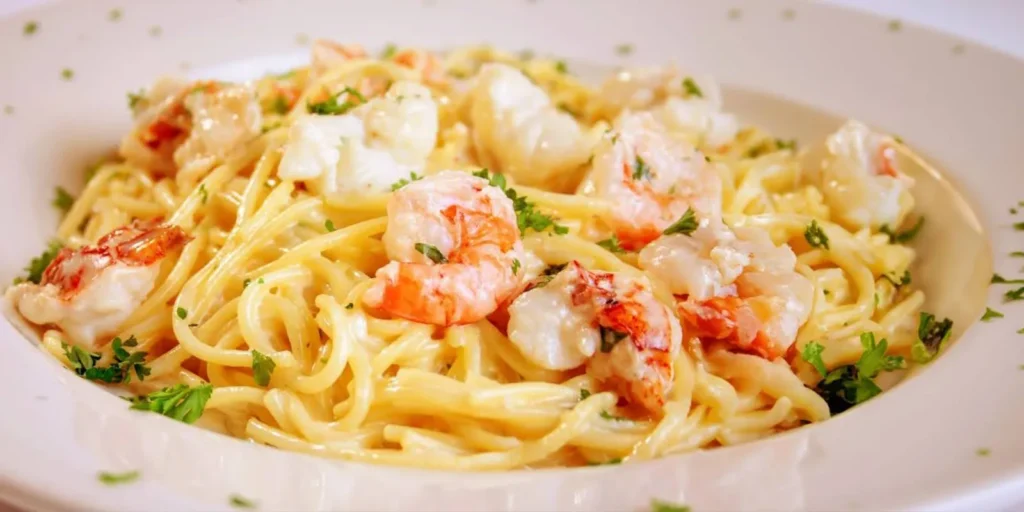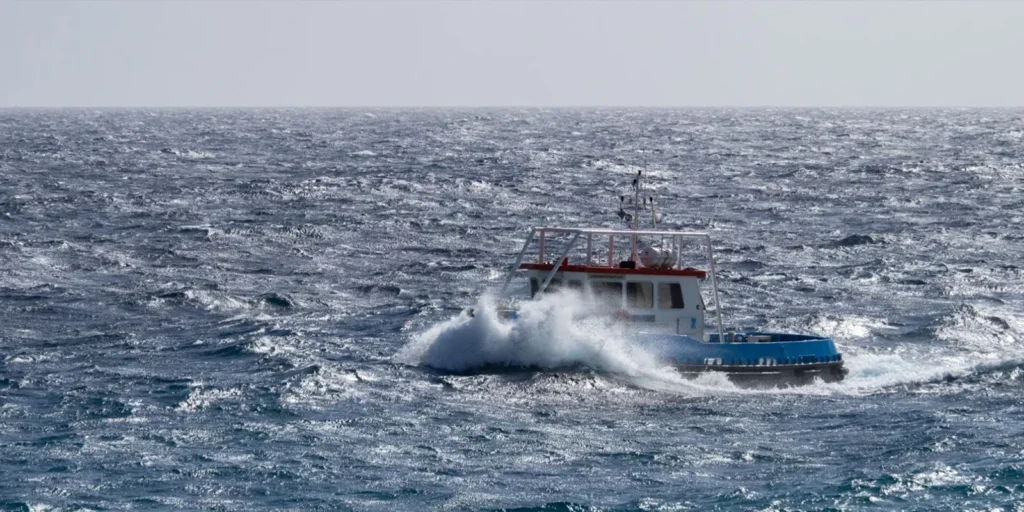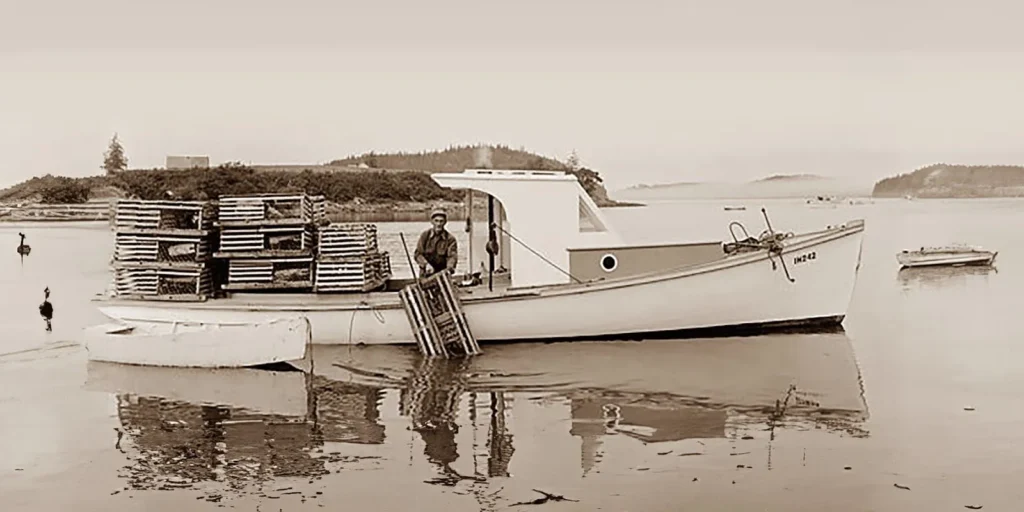
All Lobsters Look the Same, So Why is This One Blue?
Live lobsters aren’t bright red like we’re used to seeing in cartoons and movies, they are mottled brown to blend in with the ocean floor. But every once in a while, a Maine lobster fisherman will catch a lobster in a completely different color.
While extremely rare, the color variations of these rouge lobsters include blue, orange, yellow, “cotton candy,” albino, calico and even super rare half-and-half combinations. In this article we will learn more about these rare and beautiful lobsters.
Are Maine Lobsters Red in Nature?
No. Live lobsters aren’t red; they turn bright red only after cooking. Most people don’t know this because they’re used to seeing lobsters after they’ve been cooked and served on a plate. In nature, however, lobsters are usually brown and green with hints of red on their shell. But why do they turn red when they’re cooked, and how does this happen?
The Reason Maine Lobsters Turn Red When Cooked
A certain type of algae that lobsters eat contains astaxanthin, which is a carotenoid, a chemical found naturally in plants and animals. Astaxanthin helps protect lobsters from stress, and also produces a red pigment. After they eat the algae, lobsters store the pigment under their shell. After some time, the red pigment transfers into the shell, stored under layers of various proteins.
The process of storing pigment creates layers of colors, with the red pigment underneath, the blue in the shell’s middle layer, and the orange on the outside. This layering of pigment gives lobsters their mottled color. When a lobster is cooked, the heat dissolves the blue and orange proteins in the shell, revealing the bright red from below.
The Importance of Blending in
The primary reason brown lobsters are dominant is because their dark variegated coloring essentially works like camouflage. Brown lobsters are harder to see on the ocean floor, so predators are less likely to notice them. Therefore, a lobster that blends in with its environment is more likely to survive and procreate.
Blue Lobsters

The estimated occurrence of the blue lobster: 1 in 2 million
Blue lobsters are very rare. But why are they blue? How does this color mutation happen?
As previously explained, Maine lobsters consume foods with the chemical astaxanthin. The blue pigment found in lobster shells comes from a combination of astaxanthin and proteins.
Dr. Harry A. Frank, a professor of chemistry at the University of Connecticut, describes this color as “a gorgeous ice blue color.” Dr. Frank and colleagues wrote an article explaining the process. In short, a genetic mutation happens, causing an overabundance of the astaxanthin-wrapping proteins. When two astaxanthin molecules are in close contact, the orbits of the electrons alter, absorbing red light and turning the red astaxanthin molecules blue. The study’s second author, Dr. Ronald L. Christensen, described this blue shift as the most significant shift ever observed in nature. The result: a strikingly blue lobster.
Can You Eat a Blue Lobster?
Blue lobsters are so rare that only one might be found every year or two by lobstermen in Maine. They are then usually sent to aquariums. But even if you were served a blue lobster, you would never know. After it’s cooked it would turn red, just like all the other ones. As described above, the heat from cooking breaks down the proteins that make up the blue pigment.
Can You Eat a Blue Lobster?

Banana is safe from predators – and hungry people – at the University of Maine
Yellow lobsters are even rarer than blue lobsters. As with the blue lobsters, their yellow color is due to the astaxanthin in a lobster’s shell binding with a particular protein, producing the amazing color in their shell.
In 2021, a fisherman off the coast of Maine was lucky enough to catch one of these incredibly rare beauties. The lobster was christened “Banana,” and promptly delivered to the School of Marine and Environmental Programs at the University of Maine, where it now resides in their aquarium.
Just like the blue lobster and all other uniquely pigmented lobsters, yellow lobsters are seldom consumed. The cooking process removes the unique color of the lobster, returning it to the ranks of the mundane. Most Maine lobster fishermen would rather see their unique catch preserved at a local aquarium for the enjoyment of all (including the lobster).
Some interesting yellow lobster trivia: Nike made a sneaker colored like a yellow lobster. About the design of the shoe, Nike said: “Your chances of pulling up a Maine lobster trap and finding a yellow lobster are roughly one in 40 million, and the Yellow Lobster Dunk Low Pro SB is an equally rare anomaly.”
The estimated occurrence of a yellow lobster is 1 in 30 million, according to the Lobster Institute at the University of Maine. Nike almost got it right! (they were only off by 10 million)
Bright Orange Lobsters

The chance of finding an uncooked orange lobster: 1 in 30 million
Bright orange lobsters are as rare as yellow lobsters. They look a lot like the cooked lobsters we’re used to seeing, however, which is why so many of them, unluckily, end up with the same fate as their brown brethren.
In 2022, one of the incredibly rare orange lobsters awaited this fate in the live lobster tank of a Red Lobster restaurant in Hollywood, Fl. But just as it was about to be dropped in the steamer, a staff member noticed the lobster’s unusual color and saved the day.
Following the naming convention of matching the color to a food, the lobster was named “Cheddar” – a fitting title considering the establishment’s famed biscuits. After this lucky break, Cheddar traveled to its new home, Ripley’s Aquarium in Myrtle Beach in Florida.
A contributing factor to orange and other brightly colored lobsters being so rare is that they are highly visible on the ocean floor, providing an easier target for predators.
Calico Lobsters

Your odds of spotting a calico lobster: 1 in 30 million
Calico lobsters are the third-rarest lobsters in the world, behind only split-colored and white lobsters. Like calico cats, these lobsters are spotted with different colors, giving them a camouflage pattern. They usually have some combination of orange, yellow, and black in a mottled or spotted pattern.
Interestingly enough, a calico lobster was also rescued from becoming an unknowing diner’s next meal in a Red Lobster. Freckles, as the lobster would later be named, was located in Manassas, VA. Freckles was transported to live out its days at the Virginia Living Museum, where it can still be fully appreciated for its rarity and unique beauty. Hailing from Maine yet again, it is incredible Freckles beat the odds to avoid predators and dishes of melted butter to make it safely to the Chesapeake Gallery.
Split-Colored Lobsters

Your somewhat less than 50/50 odds of finding a split-colored lobster: 1 in 50 million
The split-colored lobster is one of the most peculiar and fun-looking lobsters. Astonishingly, they have two different colors clearly defined on either side of their shell.
But the peculiarity of the split-colored lobster doesn’t stop at its shell. It’s typical for these unique-looking lobsters to be gynandromorphic – possessing both male and female traits. This pattern is thought to be the outcome of a cellular split that occurred right after fertilization, during the lobster’s embryonic development.
A two-color specimen was recently caught off the coast of Maine and transferred to the Maine State Aquarium, where people can now see one of the rarest specimens of lobster known to man. While an official name has not yet been selected, a comical and fitting moniker will no doubt be chosen soon. Two-Face?
White Lobsters

The estimated occurrence of white lobsters: 1 in 100 million
White lobsters are the rarest lobster color. Surprisingly, there are actually two distinctly different types of white lobster: those that have either leucism or albinism.
In one of the greatest instances of chance in recent lobstering history, in 2021, two white lobsters were caught only days apart in Maine. Lobster fishermen Joe Bates and Bert Philbrick were credited with catching the lobsters, according to First We Feast.
Cotton Candy or Iridescent Lobsters

Leucism is a broad category of conditions that cause a partial loss of pigmentation and often a patchy pale coloration. Lobster with this condition will have some color in their shell, which can result in pale blue and pink hues, and a bit of violet. For reasons that are probably now clear, these rare crustaceans are called cotton candy lobsters.
Interestingly, leucism does not affect the eyes, whereas in most animals, albinism does. It’s also worth noting that lobsters with leucism will still turn red when cooked, whereas an albino lobster will remain white.
These lobsters are also incredibly rare, which makes the following fact even more impressive. Again, in 2021, a lobsterman off the coast of Maine hauled in and reported a super rare lobster: in this instance a cotton candy lobster. The lobster was named Haddie and eventually found a new home in an aquarium.
Albino Lobsters

Albino lobsters: 1 in 100 million
Albino lobsters suffer from a reduction of melanin production, which results in the absence of pigment. For this reason, an albino lobster is the only oddly colored lobster on our list that won’t turn red when it’s cooked. These are the rarest lobsters on this list and in the world, which makes it even more incredible that one was caught in such proximity to some of the others.
In 2020, a fisherman in Yorkshire was surprised to haul the creature up, immediately confronted with what to do with one of the world’s scarcest animals. Museums, research institutions, and many other establishments initially tried to acquire the lobster – even a Michelin-starred restaurant is rumored to have given it a shot. However, in the end, the fisherman donated the lobster to the National Trust, which returned it to the sea after display.
Albino Lobsters
Let’s review: according to Sea Coast Online, your chance of finding a:
- Blue lobster is 1 in 2 million
- Yellow lobster is 1 in 30 million
- Split lobster is 1 in 50 million
- White or albino lobster is 1 in 100 million
So, even if combined, your chances of finding one of these rare lobsters is infinitesimally small. That’s why they are so unique!
While we won’t be shipping a blue lobster to you anytime soon, don’t fret; any lobster from Maine will be just as fresh and delicious!
At ShopLobster, we work with local lobstermen to source sustainably-caught lobster and ship them alive, directly to your door. At peak freshness, these lobsters will deliver the best taste and quality, thanks to the cold Maine waters in which they live.
To explore our full range of options, visit our Shop and view all the seafood ready to be shipped to you, fast and fresh!











